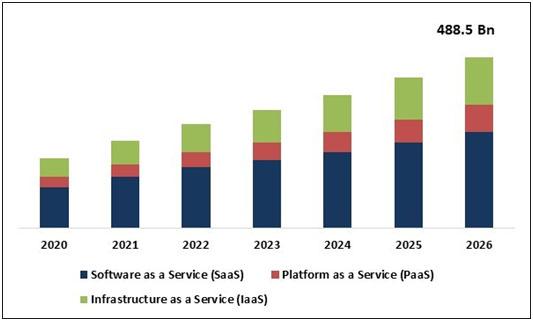Gartner’s 2020 Cloud Service Providers Magic Quadrant Report says that the leading players in the public cloud space are AWS, Azure and GCP. By the year 2026, it is estimated that the public cloud provider business will be in the range of 488 billion dollars annually. Cloud service providers provide the infrastructure, tools and software needed to run the business. While the applications are getting environment independent using the container technology which allows the users to migrate application from one environment to another environment in a seamless the cloud service providers do position some of the tools that in turn leads to a vendor lock-in situation. Apart from this, there are multiple reasons why enterprises wanted to manage multiple cloud service providers. The idea of this blog is to see the reasons why customers want to use multiple cloud service providers.
Reasons for Multi Cloud Options.
- Customers want to avoid a vendor lock-in. Usage of a specific tool or infra continuously leads to locking the customer with a vendor. Customers want to be vendor-agnostic on Infrastructure and applications.
- Certain services are done best by certain vendors and the customer needs the best of the breeds of services from different vendors. As an example, the AI infrastructure is delivered best by Google as Google is a leading AI Player. Some of the best developer tools are available from Azure and AWS provides the Auto Scaling feature possible.
- Cost is another factor for which the customers are migrating into multiple cloud environment. As an example, GCP gives per second billing on usage and AWS gives hourly billing. New entrants give better pricing and customers look for workload migration. Cloud is a continuous cost leverage unlike, data centre which is once in a year model of budgeting for IT.
- Niche services are provided by certain vendors. Many customers are adopting SaaS model and none of them wants to worry about managing the cost of infrastructure and platform. As an example, sales force leads the CRM space with their SaaS offering. ServiceNow in the ITSM space. However, adopting a SaaS model paves way for vendor lock-in as it is difficult to migrate applications once a customer is on SaaS. However, most enterprises have a combination of SaaS and Public Cloud Service Providers.
Managing Multi Cloud Environments
Managing multiple clouds is not easy as the resources required are different and therefore is a costly affair from a resource perspective. Each cloud service provider has a different set of products and no two products are designed to be equal. To find an equivalent product is an exercise by itself. Here are a few tips to manage multi cloud environments.
- Abstract the service: Define your services independent of the cloud service provider and try and see what all products can fit into your abstraction. Assume that you need a compute engine. Define the compute engine configuration and choose the equivalents from multiple cloud service providers. Service Abstraction is an important part of multi cloud management.
- Cost Management: Cloud cost management is an engineering problem and not a finance problem. In a multi cloud environment, it is important to choose a tool that can help us identify the spend issues on various platforms. As an example, cloud health from VMware gives a perspective of the resource utilization in various clouds.
- Reporting: Managing Multi cloud environments leads to receiving multiple reports and it is important to configure relevant reports of interest.
- Define the Dependencies on Cloud Service Provider: It is important to define the dependencies on the cloud service provider. As an example, if you are dependent on AWS Cloud Watch for your alerts and not any other third-party tools it is better to define the same.
- DevOps Management: All cloud service providers make the DevOps toolchain much easier than the private cloud or data centre DevOps Tools Chain. The code pipeline is easy to set up with a cloud service provider unless a specific tool is used on-prem. There is a good amount of dependency on the cloud service.
To conclude Multi Cloud is a great option which one should exercise before implementation to make sure the IT Infrastructure and applications are portable.



